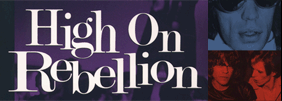
Everything that happened to me in New York happened at Max's. I met my wife there. I remember the night Cary Grant came in and the night Dylan came in. The place just stopped. -Brice Marden
An oral history of Max's by Yvonne Sewall-Ruskin with 150 old photos, published by Thunders
Mouth Press, transports you back to Max's
Kansas City, the nexus of "underground"
culture where anything could happen and did.
People from all walks of life became addicted
to the scene going on inside its doors. To
enter Max's was to confront a heady mix of
faces and personalities. The scene was the
longest running party in history, and for a
decade, the home away from home for an
influential group of artists, film makers,
musicians, writers, poets, photographers,
models, movie stars, and socialites. All sorts
of young people clamored to get into the
joint. The raucous mix created a revolution
in all aspects of the arts. The action was
forever changeable and intense. In many ways Max's exemplified instant gratification whether it
be in the form of food, drugs, sex, music, exhibitionism, or voyeurism, which is not to say Max's
was lacking in intelligent conversation. Journalist, Dick Nusser, described it "as a coming
together of generations whose time had come. It brought the 20's, 30's 40's and 50's into the 60's,
and stood as the one place where anyone felt safe to let their hair down." And we all know what
happens when you let your hair down. As Jimi Hendrix once said,"Max's Kansas City was where
you could let your freak flag fly."
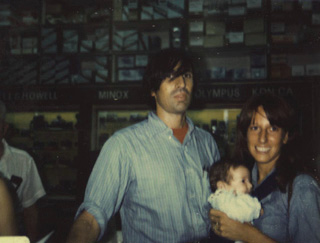
Mickey, Jessica, Yvonne
Max's owed its incredible success to the late Mickey Ruskin, its owner and founder. Mickey was nurtured the early careers of now-renowned Abstract Expressionists, Robert Rauschenberg, Larry Rivers, Sol Lewitt, Brice Marden, and Carl Andre, to name a few, not to mention Pop Art superstars like Roy Lichtenstein and Andy Warhol. Ruskin gained his following through a string of artist-oriented bistros, owned prior to Max's (the 10th Street coffeehouse, Cafe Deux Megots, the Ninth Circle, the Annex) that were integral to the development of the New York underground scene.
His transformation from nice straight-laced Jewish boy with a Cornell law degree into ultra-hip restaurateur and unofficial rabbi of the demi-monde mirrored the metamorphosis of so many others on the cutting edge of this provocative period; men and women who fled safe middle-class backgrounds, pushing the boundaries hard, and their quest for adventure, artistic or otherwise.
Yvonne Sewall-Ruskin, started her career in the fall of '67 as one of Max's memorable waitresses. Shortly after leaving her post at the nightly hot spot for a teaching position, her budding friendship with Mickey blossomed into a romantic love relationship that lasted six plus years and created two children. They remained close until his death in '83.
THE MIX
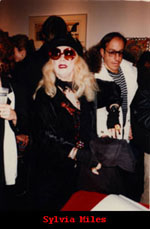 The key to the energy at Max's was the chemistry among the participants. The list of
creative personalities who frequented "the store" (as it was known to insiders) is an
international who's who of the sixties: Warren Beatty, Jane Fonda, Peter Fonda, Roger
Vadim, Faye Dunaway, Mick Jagger, Ed Koch, Allen Ginsberg, Jim Morrison, Richard
Avedon, Betsey Johnson, Lou Reed, Tennessee Williams, Timothy Leary, Norman Mailer,
Twiggy, and Robert Mapplethorpe, etc. Your waitress might have been Debbie Harry, later
of Blondie or Emmylou Harris. The quality of the mix led to such meetings as Andy
Warhol and Valerie Solanis, Candy Darling and Divine, Abbie Hoffman and Janis Joplin,
Robert Smithson and Tuesday Weld, and David Bowie, Iggy Pop, and Lou Reed. Where
else could you find the brilliant feminist, Germaine Greer, wondering who had
surreptitiously unsnapped her bra, while at another table, transvestite, Jackie Curtis,
shared make-up tips with Kennedy family member, Sargent Shriver.
The key to the energy at Max's was the chemistry among the participants. The list of
creative personalities who frequented "the store" (as it was known to insiders) is an
international who's who of the sixties: Warren Beatty, Jane Fonda, Peter Fonda, Roger
Vadim, Faye Dunaway, Mick Jagger, Ed Koch, Allen Ginsberg, Jim Morrison, Richard
Avedon, Betsey Johnson, Lou Reed, Tennessee Williams, Timothy Leary, Norman Mailer,
Twiggy, and Robert Mapplethorpe, etc. Your waitress might have been Debbie Harry, later
of Blondie or Emmylou Harris. The quality of the mix led to such meetings as Andy
Warhol and Valerie Solanis, Candy Darling and Divine, Abbie Hoffman and Janis Joplin,
Robert Smithson and Tuesday Weld, and David Bowie, Iggy Pop, and Lou Reed. Where
else could you find the brilliant feminist, Germaine Greer, wondering who had
surreptitiously unsnapped her bra, while at another table, transvestite, Jackie Curtis,
shared make-up tips with Kennedy family member, Sargent Shriver.
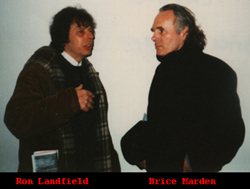 Or the elegantly
dressed Duke and Duchess of Windsor, decked out in their couturier duds perusing menus
within earshot of matching motorcycle, leather-jacketed, Max's couple of the month, Patti
Smith and Sam Shepard. Up front, at the same time, painter, Robert Smithson might be
sitting in a booth with Brice Marden, Dorothea Rockburne, and Carl Andre arguing over
his theories of conceptual art, too intent to notice Cary Grant and his party, sitting in a
booth across the way.
Or the elegantly
dressed Duke and Duchess of Windsor, decked out in their couturier duds perusing menus
within earshot of matching motorcycle, leather-jacketed, Max's couple of the month, Patti
Smith and Sam Shepard. Up front, at the same time, painter, Robert Smithson might be
sitting in a booth with Brice Marden, Dorothea Rockburne, and Carl Andre arguing over
his theories of conceptual art, too intent to notice Cary Grant and his party, sitting in a
booth across the way.
BOOK EXCERPTS
QUOTE FROM INTRODUCTION BY LOU REED, (singer, songwriter)
Mickey, thin, hawk-faced, dark stringy hair severly parted and forever
hanging over his right eye, was personally responsible for my survival
for three years because he fed me every day. While I sometimes
showed up for 5 PM buffet, it was actually the "tab" that made it
possible for me and a small army of other artists to exist just to the left
of the line that defines more extreme modes of criminality. The
difference between car theft and stabbing, for instance. I remember
when Tiny Malice [Max's regular and doorlady Dorthy Dean] tried to
commit suicide after an especially degrading sexual encounter with
Leland Rose, the critic and choreographer [nicknamed] Little Mouse
the Dwarf (another long line of self-inflicted degradation). Malice was
the publisher of the Lavender Movie Guide and an ex-New Yorker editor, fired for correcting a VERY FAMOUS author's
prose. Of course she survived and with the flowers sent by Mickey to the hospital came a note advising her to pay her bill
first next time.
YVONNE SEWALL-RUSKIN: WAITRESSING INTERVIEW WITH MICKEY
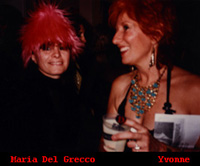 The conversation went on for a very long time and we became more and more
enamoured with each other. We were sparking some serious electrical charges -
the kind that can start fires, make your knees weak, and cause nerve endings
to tingle. It was as if nothing else in the room existed except us. I had no idea
he was Mickey Ruskin, the man who owned the place. But an eerie feeling
began to come over me, an intuitive sense that this man and I were destined to
meet. He felt it too. I knew very strongly.
The conversation went on for a very long time and we became more and more
enamoured with each other. We were sparking some serious electrical charges -
the kind that can start fires, make your knees weak, and cause nerve endings
to tingle. It was as if nothing else in the room existed except us. I had no idea
he was Mickey Ruskin, the man who owned the place. But an eerie feeling
began to come over me, an intuitive sense that this man and I were destined to
meet. He felt it too. I knew very strongly.
FIELDING DAWSON (poet, writer): People didn't consciously come to Max's; they were drawn to it. It was magnetic, and it was definitely hypnotic. The world just disappeared.
MEL BROOKS (director): Billy Wilder used to tell me about the coffeehouses in Vienna, and Max's was like that for me. I never knew any other place where you could talk with writers, performers, various wandering gypsies and bullshit about the ways of the world.
DANNY FIELDS (rock publicist): It was a time before there were so many fashionable people and so much downtown trendiness, the invasion of the Europeans and the money. New York was smaller then.
FRONT ROOM
In booths across from the bar and seated at the bar is where you'd find your heavy hitters; painters, sculptors, writers and
poets. They were the first to claim Max's as their own. They were the so-called "heteroholics," the Abstract Expressionist
heterosexual alcoholic types who kept the joint lively.
COCKTAIL HOUR
BOB RUSSELL (Max's bouncer): When Mickey had those cocktail hour chicken wings that everyone thought he was reprocessing in the basement, for many of us that was dinner. We'd all sit around very patiently sipping our fifty cent beer waiting for the chicken wings to come out. They'd arrive at the steam table and there would be this mad rush. One afternoon, there was this dame giving me the elbow. She was trying to get in before me so we were having this elbow fight at the trough. I looked to see who it was, and it was Janis Joplin. Can you believe Janis Joplin trying to get in before me?
YVONNE SEWALL-RUSKIN: As a waitress, I hated working that back room. We called it the "punishment room." Mickey would put a waitress there when she had broken one of the rules like eating shrimp. The only waitresses I knew who didn't mind working the back room were Debbie Harry and Ellen Shatzberg (we called Ellen "Mama Cita"). Warhol held court in the back room at the Round Table every night. It was the center of wild exhibitionist behavior.
STEVE GAINES (author): When you walked in the back room for the first time, no matter how hip you thought you were or how avant-garde, you got shook to your bones.
LEEE BLACK CHILDERS (writer, photographer): Patti Smith was probably the least glamorous looking of the back room rock 'n rollers. But make no mistake, her "look" was just as carefully planned. She started coming to Max's with her friend, Robert Mapplethorpe, she wanted to be a beat poet...Patti was very unsure of herself at first, but three things worked in her favor. First, her fierce ambition. Second, her innate New Jersey toughness. And third, she had rooms at the Chelsea Hotel. For the past hundred years, the Chelsea had been the haven in New York for the wierd, wonderful characters no respectable hotel would accept.
UPSTAIRS
AHMET ERTEGUN (president of Atlantic Records): It was one of the first places where rock 'n rollers hung out in New York. The atmosphere was convivial, warm, and sometimes a bit rowdy. I remember some great acts at Max's -- Delbert and Glenn used to break it up there, Iggy Pop.
DAVID JOHANSEN (lead singer New York Dolls): I went to Iggy's shows upstairs when he cut himself with the glass and was rolling around in it. I'm sitting there thinking, this guy wants to die. Alice Cooper wrapped him in a blanket and took him to the hospital.
GLOSSARY OF CHARACTERS IN WEBSITE PHOTOS
WARREN FINNERTY: actor, credits include Cool Hand Luke, The Living Theatre
FORREST MYERS (FROSTY): sculptor; designed many pieces for Max's including the lazer beam and the piece above the
bar
DAVID BUDD: painter, died of cancer
TONY MACCHIO: Max's regular
JOHN CHAMBERLAIN: sculptor best known for his works with metal auto parts recently honored by the National Arts
Foundation
ANDY WARHOL: pop artist, filmmaker
VIVA: Warhol Superstar
PATTI SMITH: singer/songwriter, albums include Horses & Easter
ROBERT MAPPLETHORPE: photographer (deceased)
TAYLOR MEAD: Warhol Superstar, poet, writer
DAVID JOHANSEN: aka Buster Poindexter, lead singer of New York Dolls
MARIA DEL GRECO: designer, hats and clothes
SYLVIA MILES: actress; credits include Midnight Cowboy
BRICE MARDEN: Abstract-Expressionist painter
RONNIE LANDFIELD: Abstract-Expressionist painter
STEVEN TYLER: lead singer with Aerosmith
BOOK HIGHLIGHTS PHOTOS BY: George Du Bois
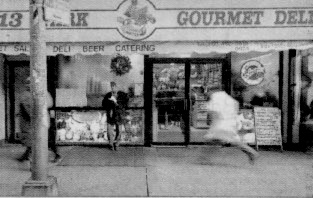
Alas, We're Not In Max's Kansas City Anymore! A Deli Now Sits On The Spot